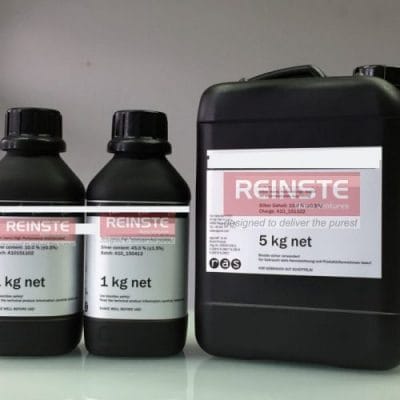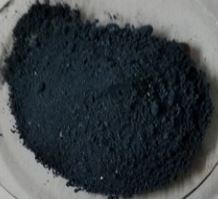A New Frontier in Infant Wellness: The Rise of Nano-Enhanced Baby Products
In a country as dynamic and populous as India, the health and safety of infants are paramount. Parents and caregivers are constantly seeking solutions that offer an extra layer of protection against harmful microbes. This search has propelled a silent but powerful revolution in the baby care industry: the integration of nanotechnology. Specifically, silver nanoparticles are at the forefront, transforming everyday items into advanced tools for baby hygiene. This isn't science fiction; it's the new reality of nano infant care, where products like an antimicrobial pacifier or a self-sanitizing baby bottle are becoming accessible, promising a safer environment for our youngest generation.
For Indian researchers and industrial innovators, this emerging field represents a significant opportunity. The demand for safer, more effective hygiene solutions is at an all-time high, driven by increased awareness and a growing middle class. The application of silver nanoparticles in consumer goods, particularly in the sensitive category of baby products, bridges the gap between advanced material science and tangible public health benefits. From reducing the risk of infections to simplifying sterilization routines, the use of a silver baby product is not just a novelty but a practical step towards enhanced infant safety. This article delves into the science, benefits, applications, and future trends of this exciting domain, providing a comprehensive overview for professionals keen on understanding or contributing to India's nano-tech landscape.
Why Researchers are Turning to Silver Nanoparticles for Baby Hygiene
The scientific community in India is increasingly focused on nanomaterials for their unique properties. For researchers in material science, microbiology, and product development, silver nanoparticles offer a compelling set of advantages, especially in the context of nano infant safety.
- Broad-Spectrum Antimicrobial Efficacy: Silver nanoparticles exhibit powerful antimicrobial activity against a wide range of bacteria, viruses, and fungi. This makes them highly effective for hygiene applications, unlike some traditional agents that have a limited spectrum.
- Durability and Longevity: When embedded into materials like plastics, silicones, or textiles, silver nanoparticles provide lasting antimicrobial properties. This "built-in" protection doesn't wash away or degrade quickly, ensuring a silver baby accessory remains hygienic throughout its intended lifespan.
- Reduced Need for Harsh Chemicals: By providing continuous surface sanitation, products infused with silver nanoparticles can reduce the reliance on harsh chemical disinfectants. This is a significant benefit in nano child care, minimizing infant exposure to potentially irritating substances.
- High Surface Area-to-Volume Ratio: The "nano" scale is key. Nanoparticles have a massive surface area relative to their size, which enhances their reactivity. This means a very small, safe amount of silver can provide a powerful antimicrobial effect, making it a cost-effective and efficient solution.
- Versatility in Application: Silver nanoparticles can be incorporated into a vast array of materials. Researchers can explore their use in everything from a silver baby bottle and nano baby toy to textiles for baby clothes and bedding, opening up extensive avenues for R&D.
From Lab to Nursery: Real-World Applications
Antimicrobial Pacifiers & Teethers
Pacifiers and teethers are constantly dropped and exposed to germs. An antimicrobial pacifier with embedded silver nanoparticles inhibits the growth of bacteria on its surface. This provides a constant state of cleanliness, offering peace of mind to parents and contributing to better baby hygiene.
Self-Sanitizing Baby Bottles
The interior surfaces of baby bottles are breeding grounds for bacteria. A silver baby bottle utilizes nanoparticles to prevent the formation of biofilm and microbial colonies, simplifying the cleaning process and ensuring the bottle is safer for the next feeding. This is a prime example of advanced nano infant care.
Hygienic Nano Baby Toys
Toys, especially those shared among children, are vectors for germs. A nano baby toy made with silver-infused polymers maintains a more hygienic surface, reducing the transmission of microbes and supporting a healthier play environment. This directly addresses key concerns in nano infant safety.
Antimicrobial Textiles and Accessories
The application extends to fabrics. Baby blankets, clothing, and changing mats can be treated with silver nanoparticles. This makes the fabric resistant to odor-causing bacteria and other microbes, keeping them fresher for longer. This is a key area where a silver baby product offers tangible benefits.
The Indian Market: A Fertile Ground for Nano-Enhanced Baby Products
The Indian market for baby care products is not just growing; it's evolving. Modern Indian parents are digitally savvy, well-informed, and place a high premium on safety and innovation. This creates a fertile ground for the commercialization of R&D in silver nanoparticles for anti-bacterial baby products. Several trends underscore this opportunity. Firstly, the 'Make in India' initiative encourages domestic production and innovation, providing a supportive ecosystem for companies developing advanced materials and consumer goods. Developing a homegrown silver baby product aligns perfectly with this national agenda.
Secondly, there is a clear market pull for products that offer convenience without compromising on safety. An antimicrobial pacifier that requires less frequent, rigorous sterilization is a compelling proposition for busy parents. As awareness about nanotechnology grows, the term 'nano' is shifting from a scientific curiosity to a mark of advanced protection. This consumer acceptance is crucial for the success of nano infant care solutions. For Indian businesses and researchers, the key is to focus on transparent communication about the safety and efficacy of these products, backed by robust testing and certification. Collaborations between research institutions and manufacturers can accelerate the journey from concept to a commercially viable silver baby accessory, capturing a significant share of this promising market.



